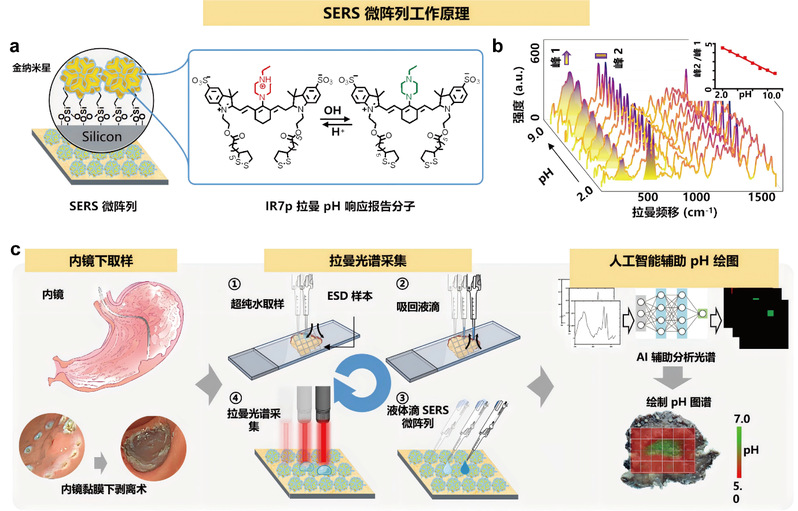
On October 21, 2025, a joint team led by Professor Cong Li and Associate Professor Yan You from Fudan University School of Pharmaceutical Sciences, and Professor Jianting Cai from the Second Affiliated Hospital of Zhejiang University School of Medicine, published landmark research in the international authoritative journal Advanced Science. The team developed a "pH ratiometric responsive Raman array + AI multimodal neural network" intraoperative detection system, which successfully breaks through the intraoperative localization dilemma of early gastric cancer (EGC) and provides precise navigation for endoscopic submucosal dissection (ESD), significantly improving the early diagnosis and treatment of gastric cancer.
It is reported that the 5-year survival rate of EGC patients exceeds 90%, but drops sharply to 20%-30% for advanced gastric cancer. Traditional diagnosis relies on morphological observation. Due to the 60% morphological similarity between EGC and gastritis, the missed diagnosis/misdiagnosis rate of traditional techniques is as high as 12%-25%, seriously affecting treatment effects. The joint team found that gastric mucosal pH disorder caused by significant downregulation of ATP4B protein in gastric cancer tissues is a specific signal for EGC, based on which an innovative detection system was built.
The system uses high-sensitivity surface-enhanced Raman scattering (SERS) technology to capture pH signals and combines AI model analysis. Research on 1,516 mucosal sampling points from 50 patients showed that after training with 40 patients (1,127 sampling points) and external validation with 10 patients (389 sampling points), the system determined the EGC pH threshold as 6.845, with a detection sensitivity of 87.79%, specificity of 85.04%, and overall accuracy of 86.89%, showing excellent data consistency and reliability (R²=0.79, κ=0.71).

This achievement breaks through the limitations of traditional diagnosis, takes only 5 minutes to complete detection, and can be integrated into existing endoscopic systems for promotion. Co-first authors include Huihui Yan and Zongkuo Li from the Second Affiliated Hospital of Zhejiang University, Jing Zhao and Ziyi Jin from Fudan University School of Pharmaceutical Sciences, and Lei Su from Institute of Automation, Chinese Academy of Sciences. Corresponding authors are Cong Li and Yan You from Fudan University School of Pharmaceutical Sciences, and Jianting Cai from the Second Affiliated Hospital of Zhejiang University. The research was supported by the National Key R&D Program, National Natural Science Foundation of China and other projects.
Original link: https://advanced.onlinelibrary.wiley.com/doi/10.1002/advs.202504932